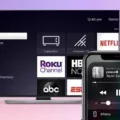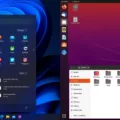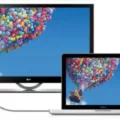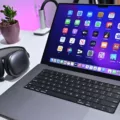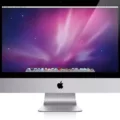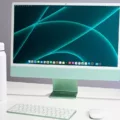In today’s digital world, having access to different operating systems is essential for many individuals. Mac users, in particular, often find themselves looking for ways to run Windows applications on their devices. This is where Windows emulators for Mac come into play.
A Windows emulator is a software application that allows you to run Windows operating system and applications on a Mac computer. It creates a virtual environment within your macOS, enabling you to seamlessly switch between the two operating systems without having to reboot your computer.
One of the most popular Windows emulators for Mac is Parallels Desktop. This powerful application allows you to install Windows OS on a virtual machine and run Windows applications and games within your macOS environment. Parallels Desktop is known for its ease of use and flawless performance, making it a top choice for Mac users who need access to Windows-specific software.
Another option for running Windows on a Mac is Boot Camp. Unlike Parallels Desktop, Boot Camp allows you to install Windows directly on your Mac by splitting your storage drive into separate partitions for macOS and Windows. This means that when you want to switch between operating systems, all you need to do is restart your Mac and hold down the Option key. Boot Camp is a safe and reliable option for running Windows on a Mac, and it supports the latest version of Microsoft Windows 10.
When it comes to gaming, there are several Windows emulators for Mac that cater specifically to gamers. These emulators allow you to play Windows-based games on your Mac without the need for a separate gaming PC. Some popular options include:
1. Virtual Machine: This emulator creates a virtual environment on your Mac, allowing you to install and run Windows games seamlessly.
2. DOSBox: If you’re a fan of retro gaming, DOSBox is a great emulator that lets you play old DOS-based games on your Mac.
3. DeSmuME: This emulator specializes in running Nintendo DS games on your Mac. It provides excellent compatibility and performance for DS game enthusiasts.
4. Redream: For Sega Dreamcast fans, Redream is an emulator that allows you to play Dreamcast games on your Mac. It offers high-quality graphics and smooth gameplay.
5. Dolphin Emulator: Dolphin Emulator is a popular choice for running GameCube and Wii games on your Mac. It provides excellent compatibility and performance for a wide range of titles.
6. RetroArch: RetroArch is an all-in-one emulator that supports multiple platforms, including Windows-based systems. It offers a user-friendly interface and supports a wide range of games.
7. OpenEmu: OpenEmu is a powerful emulator that supports a variety of gaming consoles, including Windows-based systems. It provides a sleek and intuitive interface, making it easy to browse and play your favorite games.
Whether you need to run Windows applications, play games, or simply explore different operating systems, there are plenty of Windows emulators available for Mac users. Each emulator offers its own unique features and advantages, so it’s important to choose one that best suits your needs. With the help of these emulators, Mac users can enjoy the best of both worlds by seamlessly integrating Windows functionality into their macOS environment.
Can You Install a Windows Emulator On a Mac?
It is possible to install a Windows emulator on a Mac. One popular option for this is Parallels Desktop. Parallels Desktop allows you to create a virtual machine on your Mac, where you can install and run the Windows operating system. This means that you can use Windows apps and even play some Windows games on your Mac without the need to reboot your computer.
Here are some key points about Parallels Desktop:
1. Virtual Machine: Parallels Desktop creates a virtual machine on your Mac, which acts as a separate computer within your macOS environment. This virtual machine can run Windows OS and its applications.
2. Easy Installation: Installing Parallels Desktop is a straightforward process. You can download it from the Parallels website and follow the installation wizard to set it up on your Mac.
3. Seamless Integration: Parallels Desktop integrates seamlessly with macOS, allowing you to run Windows applications side by side with your Mac apps. You can open Windows apps directly from your Mac’s dock or Launchpad.
4. Coherence Mode: Parallels Desktop offers a Coherence Mode, which hides the Windows desktop and makes Windows applications appear as if they are running natively on your Mac. This provides a more integrated and seamless experience.
5. Performance: Parallels Desktop is known for its excellent performance. It utilizes your Mac’s hardware resources efficiently, allowing you to run Windows apps smoothly without any noticeable lag.
6. Shared Folders and Clipboard: Parallels Desktop allows you to share folders between your Mac and Windows virtual machine. This makes it easy to transfer files between the two operating systems. Additionally, you can also share the clipboard, enabling you to copy and paste text and files between macOS and Windows.
7. Multiple Operating Systems: Parallels Desktop supports running not only Windows but also other operating systems like Linux and macOS Server. This flexibility allows you to experiment with different OS environments on your Mac.
Parallels Desktop is a powerful and user-friendly option for installing a Windows emulator on your Mac. It creates a virtual machine that enables you to run Windows applications seamlessly alongside your macOS apps. With its ease of installation, performance, and integration features, Parallels Desktop provides a convenient way to utilize both macOS and Windows on your Mac without the need for rebooting.

Is Boot Camp Safe For Mac?
Boot Camp is safe for Mac. It is a built-in utility provided by Apple that allows you to install and run Windows on your Mac. Here are a few reasons why Boot Camp is considered safe:
1. Official support: Boot Camp is an official Apple tool, meaning it is designed and supported by Apple themselves. This ensures that the software is reliable and regularly updated to work seamlessly with Mac hardware.
2. Separate partitions: When you use Boot Camp, your storage drive is divided into separate partitions for macOS and Windows. This separation keeps both operating systems isolated from each other, minimizing the risk of any potential conflicts or data loss.
3. Easy switching: Switching between macOS and Windows on your Mac is straightforward. Simply restart your Mac and hold down the Option key while it boots. This allows you to select which operating system you want to use, without any complications.
4. Compatibility: Boot Camp provides the necessary drivers and software to ensure compatibility between Mac hardware and Windows. This means that you can utilize all the features and functionalities of your Mac, including Wi-Fi, Bluetooth, and other hardware components, while running Windows.
5. Apple’s security measures: Macs are known for their robust security features, and these measures extend to Boot Camp as well. Apple’s built-in security features, such as Gatekeeper and XProtect, help protect your Mac from malware and other potential threats, even when running Windows.
6. User-friendly interface: Boot Camp comes with a user-friendly interface that guides you through the installation and setup process. Apple provides detailed instructions and support documentation, making it easier for users to safely install and configure Windows on their Macs.
By using Boot Camp, you can enjoy the flexibility of having both macOS and Windows on your Mac, without compromising on safety or performance.
Can You Install Windows 10 On a Mac?
It is possible to install Windows 10 on a Mac using a feature called Boot Camp. Boot Camp is a built-in utility that allows you to partition your Mac’s hard drive and install Windows on a separate partition. This enables you to have both macOS and Windows 10 on your Mac, and you can switch between the two operating systems when restarting your computer.
Here are the steps to install Windows 10 on a Mac using Boot Camp:
1. Check system requirements: Before proceeding, make sure your Mac meets the system requirements for Windows 10. You can find the system requirements on Microsoft’s official website.
2. Backup your data: It’s always a good idea to create a backup of your important files and data before proceeding with any major changes to your computer.
3. Prepare a Windows 10 installation media: You will need a copy of the Windows 10 installation files in the form of an ISO or a USB drive. You can download the ISO file from the Microsoft website or create a bootable USB drive using the Media Creation Tool.
4. Open Boot Camp Assistant: Boot Camp Assistant is located in the Utilities folder within the Applications folder. Launch the application to begin the process.
5. Partition your Mac’s hard drive: Boot Camp Assistant will guide you through the process of partitioning your Mac’s hard drive to create a separate space for Windows. You can choose the size of the Windows partition based on your needs.
6. Install Windows 10: Once the partitioning is complete, you will be prompted to insert the Windows 10 installation media. Follow the on-screen instructions to install Windows 10 on the newly created partition.
7. Set up Windows 10: After the installation is complete, your Mac will restart and boot into Windows 10. Follow the initial setup process to configure Windows 10 according to your preferences.
8. Install Boot Camp drivers: Boot Camp drivers are essential for your Mac’s hardware to work properly in Windows 10. These drivers are included in the Boot Camp Assistant and can be installed after Windows 10 setup is complete. Simply open Boot Camp Assistant again and select the option to install the drivers.
9. Switch between macOS and Windows: When you want to switch between macOS and Windows, simply restart your Mac and hold down the Option (⌥) key while it is booting up. This will present you with a menu to choose the operating system you want to use.
It is worth noting that installing Windows 10 on a Mac using Boot Camp may require a valid Windows license. Additionally, some Mac models may have limitations or specific requirements, so it’s always recommended to check the official Apple support documentation for your specific Mac model before proceeding.
What Emulators Can You Run On Mac?
There are several emulators that can be run on a Mac, providing users with the ability to play games or run software from different platforms. Here are seven of the best emulators for Mac:
1. Virtual Machine: A virtual machine allows you to run an entire operating system within your Mac. This means you can run Windows, Linux, or other systems on your Mac and use software or games that are specifically designed for those platforms.
2. DOSBox: DOSBox is an emulator specifically designed to run games and software that were made for MS-DOS. It allows you to play classic DOS games or run older DOS applications on your Mac.
3. DeSmuME: DeSmuME is a Nintendo DS emulator that lets you play DS games on your Mac. It supports features like save states, microphone emulation, and multiplayer functionality.
4. Redream: Redream is a Dreamcast emulator that enables you to play games from Sega’s Dreamcast console on your Mac. It offers high compatibility and performance, as well as features like save states and widescreen support.
5. Dolphin Emulator: Dolphin Emulator is a popular emulator for Nintendo GameCube and Wii games. It allows you to play these games on your Mac, with features such as high-definition rendering, save states, and support for game controllers.
6. RetroArch: RetroArch is a multi-platform emulator that supports a wide range of gaming systems, including NES, SNES, Game Boy, PlayStation, and more. It offers a user-friendly interface and features like shaders, netplay, and rewind.
7. OpenEmu: OpenEmu is a comprehensive emulator for Mac that supports a variety of gaming systems, including NES, SNES, Game Boy, Nintendo 64, PlayStation, and more. It provides a visually appealing interface, customization options, and features like save states and gamepad support.
These emulators offer Mac users the opportunity to play games or run software from different platforms, expanding the range of available options and providing a nostalgic gaming experience.
Conclusion
When it comes to running Windows applications on a Mac, both Parallels Desktop and Boot Camp offer reliable and efficient solutions. Parallels Desktop provides the convenience of running Windows within the macOS environment without the need to reboot your computer. It is user-friendly and allows for seamless integration between the two operating systems. With Parallels Desktop, you can easily install Windows OS and enjoy a wide range of Windows apps and even some games on your Mac.
On the other hand, Boot Camp allows for a more separate and dedicated Windows experience on your Mac. By splitting your storage drive into separate partitions, Boot Camp keeps the macOS and Windows sides completely separate. This provides a safe and stable environment for running Windows, and switching between the two operating systems is as simple as restarting your Mac and holding down the Option key.
Ultimately, the choice between Parallels Desktop and Boot Camp depends on your specific needs and preferences. If you require the flexibility of running Windows apps within macOS, Parallels Desktop is a great choice. If you prefer a more dedicated Windows experience and don’t mind rebooting your Mac to switch between operating systems, Boot Camp is a solid option.
Both Parallels Desktop and Boot Camp are reliable and widely used solutions for running Windows on a Mac, and whichever option you choose, you can rest assured that you will be able to enjoy the best of both worlds on your Mac.


